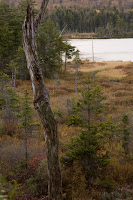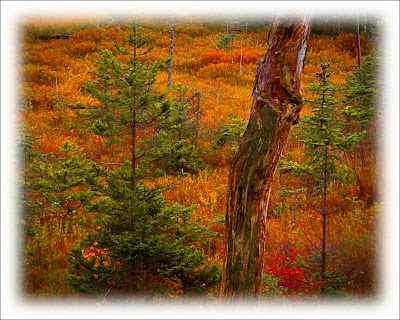

Why shoot in RAW? Well, here's an example of why. The original shot (the smaller, vertical shot) has all the color information found in the finished (developed) image. The first, and most obvious change from the original to the completed image is that it was cropped from a vertical to a horizontal representation of the scene. To make the absolute best image from the shot there "should have been" a horizontal to start with. But, there wasn't, so cropping was needed. The second thing that's highly noticeable is that the negative was flipped. It used to be slightly trickier in the film days because you had the side of the film with the actual image on the opposite side as it should have been. It resulted in a minute degradation in image quality, but typically not enough to notice. I think it was more psychological on the part of the photographer than it was physical to the viewer. Today, "flipping the negative" is simply a matter of moving ones and zeros. No loss of quality. To join the discussion of printing images right out of the camera versus developing an image, hit the "read more".
Anyone who thinks they should "get it right in the camera" to a printable condition shouldn't be shooting in a RAW format. If you want to pop the memory card out of the camera and plug it into a printer, shoot in Fine JPEG. You do want to be able to make the best quality available to you, and you can always reduce the quality to get something for a 4 x 6 print of for the web. You just can't make a good, large print from a highly compressed file. The other thing to keep in mind is that a JPEG image is "developed" in the camera. Rather than making the development decisions on your own, you're allowing the camera to make a set of assumptions about "how" the picture should look. Don't get me wrong, the algorithms set by Nikon, or Canon, or Sony, or Fuji are pretty darn good. Each time I shoot a wedding I shoot in JPEG just to avoid needing to develop the images in Lightroom. It's a minor thing, but a time saver. Sorry, but the typical bride or bride's mother isn't going to know that the image quality isn't the absolute best it can be. They'll be thrilled that they have good a good wedding album.
.
You can read in a thousand posts on the web that RAW images are flat, they're not sharp, they lack punch and need to be worked. It's true. The camera serves as a recording device and takes in all the detail that hits the sensor. It's sort of like the ultimate unbiased reporter. There's a television news outlet that says "we give you the fact, you decide". Yea, right. There's a bias in there somewhere. The equivalent of a RAW file would be to air the raw footage of a news event. Once something is edited, someone's bias is introduced. Based on that theory, we apply our own biases to whatever image we develop. Some people do incredibly sensitive developing, coming up with very subtle tonal differences. My "editorializing" is more of a "hit you over the head" style. I don't think I've ever heard anyone say "how sensitive" or "how subtle" when referring to one of my finished images. That just doesn't happen.
.
Whatever your "style" is, RAW images need to be developed. It's the same in the dry darkroom as it was in the wet darkrooms of the past. The decisions make by the photographer are what determines the final image, not the camera.





0 comments:
Post a Comment